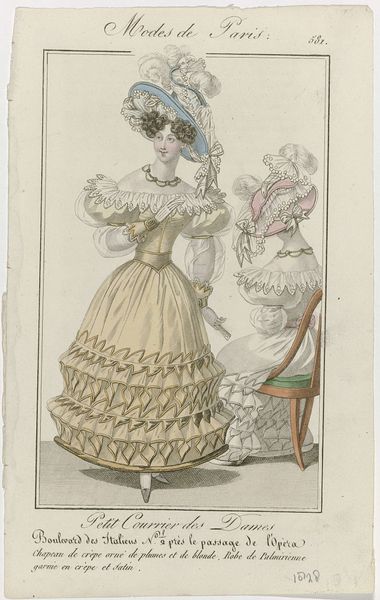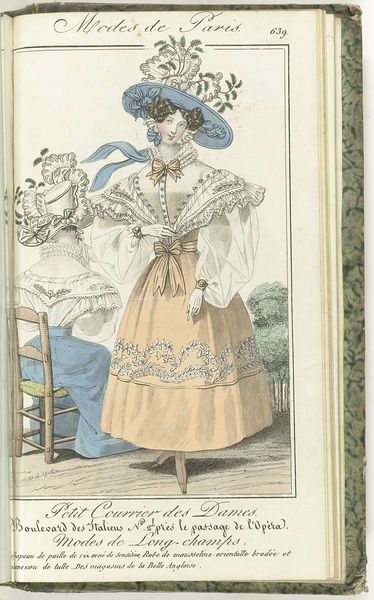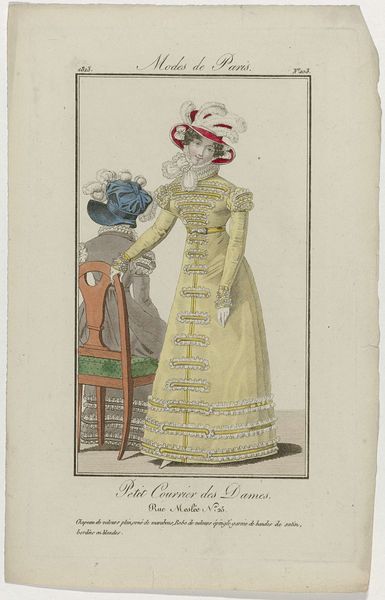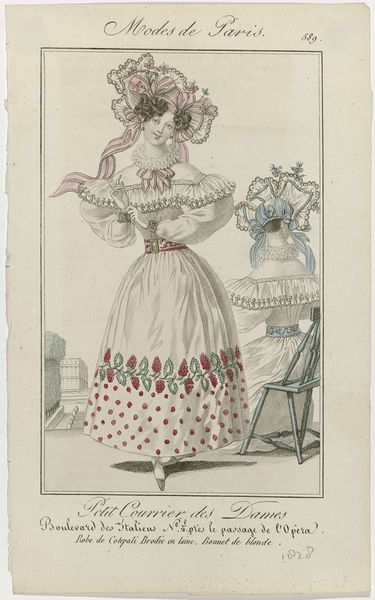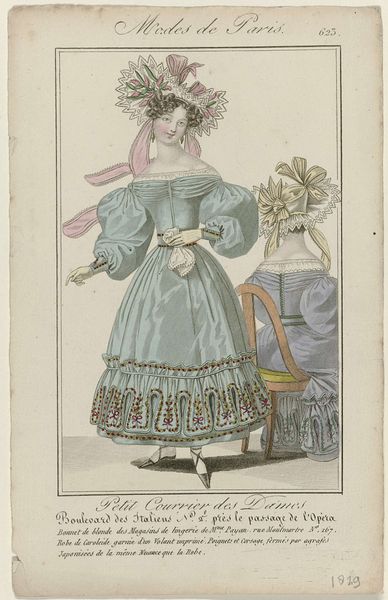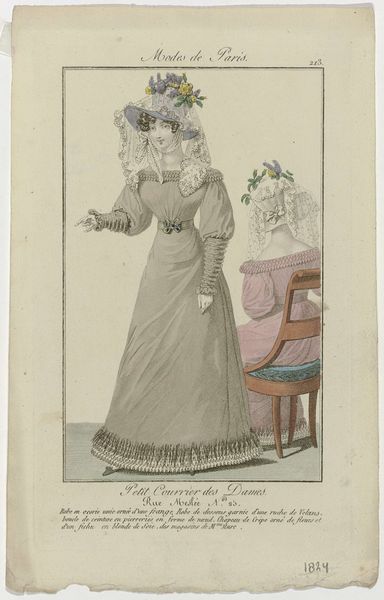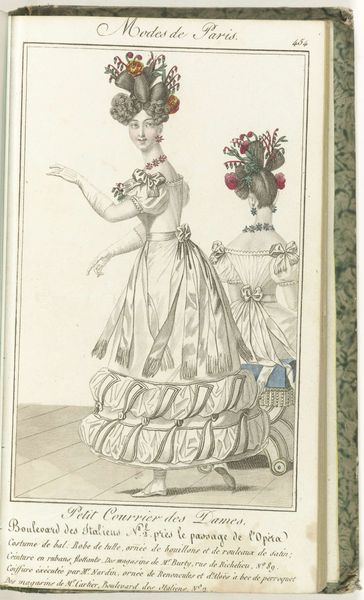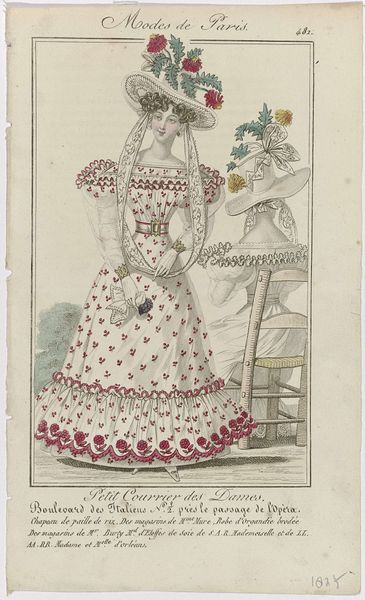
drawing, print, paper, engraving
#
portrait
#
drawing
# print
#
paper
#
romanticism
#
dress
#
engraving
Dimensions: height 206 mm, width 128 mm
Copyright: Rijks Museum: Open Domain
Curator: This engraving, simply titled "Petit Courrier des Dames," published in 1828, showcases fashion from that period. Immediately apparent is its emphasis on textiles, detail, and artisanal craftsmanship in the presentation of women's dress. Editor: Oh, she’s giving me serious Regency-era-meets-origami vibes! The hat is something else entirely, isn't it? Like a confectioner's fever dream. Curator: Precisely! It’s all about the materials – gros de Naples for the bonnet, embroidered tulle for the canezou, and jacconas for the robe. These fabrics would have been painstakingly sourced, dyed, and crafted. Each element speaks volumes about the production methods and the labor involved. We also cannot ignore that such intricate pieces of apparel like those represented here signified social status for their wealthy consumers. Editor: I can almost feel the weight of the fabric! There’s a rigidity in the dress’s geometry juxtaposed with this delicate lacework – which makes you wonder how restricting these trends must've felt to move in, let alone live in! Did women actually *do* anything in these getups? I feel that the drawing flattens her: is she contained? liberated? is the viewer invited, or are they excluded? Curator: This piece was produced as a print, and would've reached an audience outside the Parisian elites who might consume it. These fashion plates like this one weren't just about mirroring the sartorial styles, they had an instructive function about contemporary dress trends. In this sense the mode of display matters because it mediates an aspirational lifestyle beyond Paris. Editor: So it's more about consumption fantasies than pure representation? Now I wonder how different social strata engaged these plates in a global way - were the elites also consulting fashion plates even as they wore expensive originals? What happened in the margins and outside of that gallery, to all of the people laboring outside of this picture so that it could exist in the first place? It gives one pause. Curator: Indeed. This small print holds a mirror to the elaborate social and material networks that shaped fashion in the early 19th century and its role as the popular currency. Editor: I can definitely look at these bonnets differently now, beyond the frills!
Comments
No comments
Be the first to comment and join the conversation on the ultimate creative platform.
